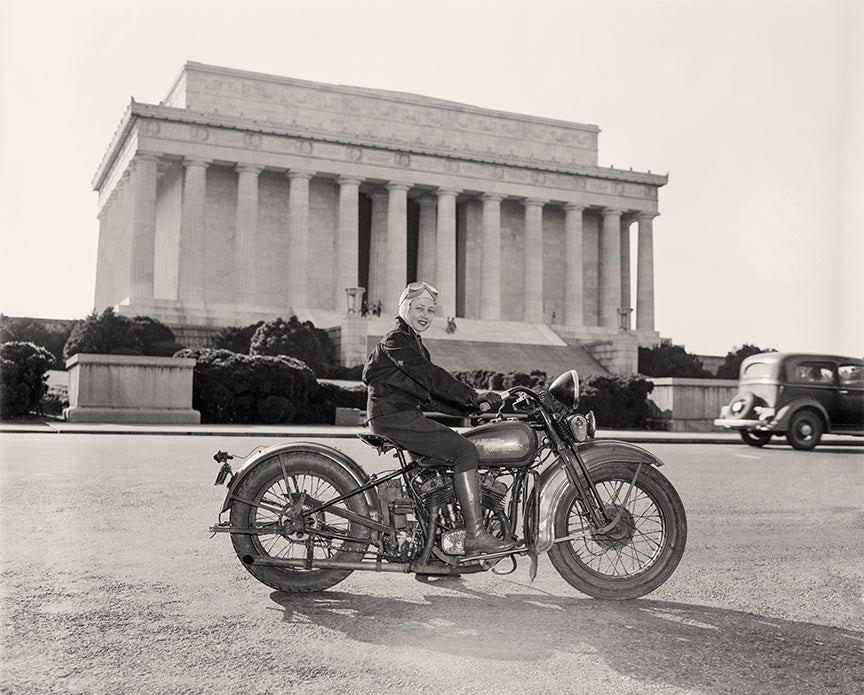Your Cart is Empty
Free and Fast Shipping | 30 Day Money Back Guarantee
Free and Fast Shipping | 30 Day Money Back Guarantee
Free and Fast Shipping | 30 Day Money Back Guarantee

3 min read
The roar of a motorcycle engine is a call to freedom, a bold declaration of independence and strength. This call has resonated with women since the earliest days of motorcycling, weaving a rich tapestry of empowerment, rebellion, and profound change through the fabric of history. The relationship between women and motorcycles is not just a chronicle of transportation but a saga of emancipation, challenging societal norms and redefining women's roles both on the road and within society at large.
In the late 19th and early 20th centuries, the motorcycle emerged as a symbol of the new technological age, embodying speed, danger, and a daring break from convention. It wasn't long before women, eager to cast off the restrictive shackles of their roles, climbed aboard these machines, signaling not only a physical mobility but also a social mobility that was unheard of at the time. Women like Effie Hotchkiss, who in 1915, along with her mother Avis, became the first women to ride across the United States on a motorcycle, showcased the possibilities of what women could achieve and where they could go, both literally and metaphorically.
The interwar period saw a surge in women riders, with pioneers like Dot Robinson and Theresa Wallach not only embracing motorcycles for the freedom and independence they offered but also for competitive racing. These women defied the expectations placed upon their gender, demonstrating skill, courage, and tenacity on par with their male counterparts. Their achievements on the race tracks helped to slowly erode the stereotypes that sought to confine women's capabilities and aspirations.
The post-war era brought with it a cultural shift, as motorcycles became associated with rebellion and counterculture. Women riders of this era, such as the iconic Marianne Faithfull in the 1960s, further cemented the motorcycle as a symbol of defiance against traditional gender roles. Riding a motorcycle became an act of resistance, a way to assert one's identity and autonomy in a world that often sought to limit both.
As the decades passed, the sight of women on motorcycles became more common, yet the significance of this act remained as potent as ever. Groups and organizations dedicated to women riders proliferated, creating communities that supported and celebrated female motorcyclists. These groups not only provided a space for camaraderie and shared passion but also advocated for greater recognition and rights within the broader motorcycle and automotive industries.
Today, the legacy of women motorcyclists continues to evolve. With increased visibility and growing numbers, women riders are challenging the last vestiges of the motorcycle world's gender biases, proving that the bond between a woman and her motorcycle is as much about the future as it is about the past. It's a testament to the enduring spirit of those early riders who saw in the motorcycle a path to a different kind of life—one marked by freedom, empowerment, and an unyielding drive towards the horizon.
The history of women on motorcycles is more than just a chapter in the story of motorcycling; it is a narrative of progress, of breaking barriers and challenging stereotypes. It's a reminder that the road belongs to all who dare to traverse it, regardless of gender, and that the journey towards equality continues, mile by mile, driven by the indomitable spirit of women riders.
Pictured:
Sally Halterman, recognized as the first woman to be granted a license to operate a motorcycle in Washington, D.C., is a notable figure in the history of motorcycling in the United States. Her achievement in September 1937 not only marked a significant milestone for women in motorcycling but also challenged prevailing gender norms and societal expectations of the time. Halterman's determination and passion for motorcycling paved the way for future generations of women riders, highlighting the broader struggle for women's rights and equality, including the freedom to participate in activities and professions traditionally dominated by men. Her story is often celebrated within motorcycle communities and by women's rights historians as an example of early female empowerment and independence.
Comments will be approved before showing up.
Used grease or lard bucket was carried under rear axle to periodically grease wheel hubs. Very good video.
I'm super impressed how quickly the print got to Canada and the quality is worth every penny. Thank you so much, Gordon Parks is a hero to my partner and I'm sure he will love this surprise
Received as a gift and could not be happier with the quality of the print. Shipping container ensure this arrived in perfect condition.
Love the simplicity and vintage feel of this print. Plus- prickly + beauty theme.
Wow. What an incredible photograph, and I love the story behind it as well. Seller does excellent work, and I couldn't be more pleased.
Amazing photograph and beautifully reproduced. Excellent work and shipped quickly. Thanks so much.
Beautiful photo and amazing quality!
5 stars review from Claire
Image quality and the extent to which the image was packaged securely was perfect. Could not be happier with the product.
This image along with much of Thomas Hines' work is incredibly powerful. The brutality faced by these children makes our everyday hardships seem frivolous.
5 stars review from Pjewc191
Great item. Packed well for shipping. Shipped quickly.
arrived quickly and looks great!
Classic. Framed it, and hung it up.
Beautiful, clear print of a lovely child, which is perfect for our homage to the Native Americans who lived on our property.